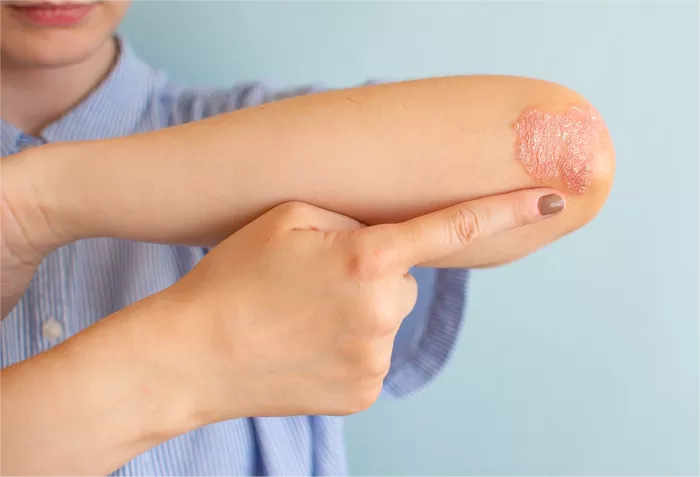Ringworm, despite its name, is not caused by worms. Rather, it is a fungal infection that can affect the skin, scalp, and nails. Among its various forms, ringworm rash, also known as tinea corporis, is a common presentation characterized by red, circular patches that can be itchy and uncomfortable. One of the primary concerns individuals have when diagnosed with ringworm is whether the rash is contagious and how easily it can spread. In this article, we will delve into the mechanisms of ringworm transmission, the factors influencing its spread, and measures to prevent its dissemination.
The Contagious Nature of Ringworm Rash
Ringworm rash is indeed contagious. It spreads through direct contact with an infected individual or indirect contact with contaminated objects or surfaces. The causative agents of ringworm rash are dermatophytes, a group of fungi that thrive on the skin’s outer layer, hair, and nails. These fungi feed on keratin, a protein found in these structures, leading to the characteristic symptoms of ringworm.
Direct contact with an infected person or animal, such as touching the rash or sharing personal items like towels, clothing, or sports equipment, can facilitate the transmission of ringworm. Additionally, contact with contaminated surfaces, such as gym mats, wrestling mats, or locker room benches, can also contribute to its spread. Moreover, dermatophytes can survive on surfaces and objects for an extended period, increasing the risk of transmission even when the infected individual is not present.
Factors Influencing the Spread
Several factors influence the spread of ringworm rash, including:
1. Hygiene Practices: Maintaining good hygiene practices, such as regular handwashing and keeping the skin clean and dry, can help prevent the spread of ringworm rash. Individuals should also avoid sharing personal items and ensure that shared spaces are properly cleaned and disinfected.
2. Immune Status: The immune system plays a crucial role in combating fungal infections like ringworm. Individuals with weakened immune systems, such as those with HIV/AIDS or undergoing immunosuppressive therapy, are more susceptible to ringworm and may experience more severe or recurrent infections.
3. Environmental Factors: Certain environments, such as warm and humid climates, provide ideal conditions for fungal growth and proliferation. Consequently, individuals living in such environments may be at a higher risk of contracting ringworm rash.
4. Occupational Hazards: Certain occupations, such as healthcare workers, daycare providers, and athletes, may be at an increased risk of ringworm due to frequent contact with infected individuals or contaminated surfaces.
5. Animal Contact: Pets, particularly cats, dogs, and rodents, can carry dermatophytes and transmit them to humans. Close contact with infected animals or contaminated pet belongings can lead to ringworm transmission.
Preventive Measures
Preventing the spread of ringworm rash involves implementing various preventive measures, including:
1. Maintaining Personal Hygiene: Regularly wash hands with soap and water, especially after touching animals or potentially contaminated surfaces. Keep the skin clean and dry, and avoid sharing personal items such as towels, clothing, and grooming tools.
2. Cleaning and Disinfection: Thoroughly clean and disinfect surfaces, particularly in shared spaces such as locker rooms, gyms, and childcare facilities. Pay special attention to frequently touched surfaces and objects.
3. Avoiding Contact with Infected Individuals: Minimize direct contact with individuals diagnosed with ringworm rash until their infection has cleared. Avoid sharing personal items with infected individuals and encourage them to seek prompt medical treatment.
4. Environmental Control: Maintain clean and well-ventilated living and working environments. Keep surfaces dry and reduce humidity levels, especially in areas prone to fungal growth.
5. Pet Care: Regularly inspect pets for signs of ringworm, such as patches of hair loss or skin lesions. Promptly treat any suspected cases of ringworm in pets and avoid close contact with infected animals or their belongings.
Conclusion
Ringworm rash is a contagious fungal infection that can spread through direct and indirect contact with infected individuals or contaminated surfaces. Understanding the mechanisms of transmission and implementing preventive measures are essential for controlling its spread. By maintaining good hygiene practices, promoting environmental cleanliness, and minimizing contact with infected individuals or animals, the risk of ringworm transmission can be significantly reduced. Early detection and prompt treatment of ringworm infections are also crucial for preventing its dissemination and minimizing its impact on affected individuals and communities.
























